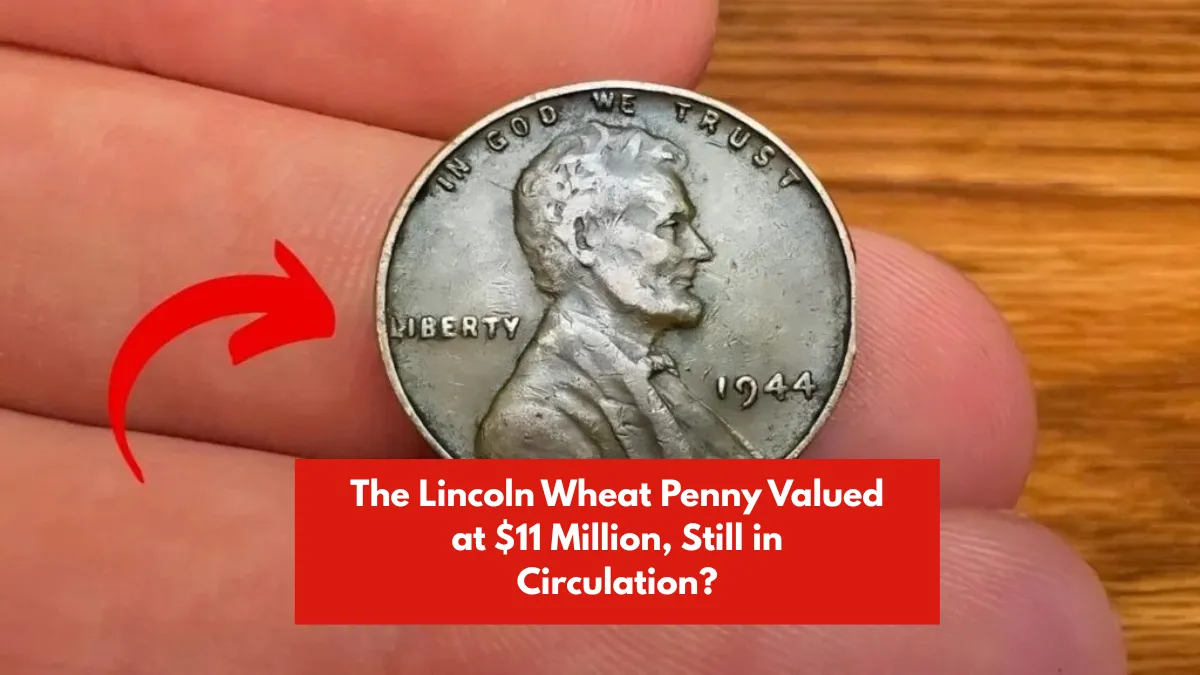The Lincoln Wheat Penny Worth $11 Million: A Tiny Coin with a Big Surprise
You might have a small fortune sitting in your pocket without even knowing it. The Lincoln Wheat Penny, a simple one-cent coin first made in 1909, has become one of the most valuable coins in American history. Some rare versions of this coin have sold for up to $11 million, and believe it or not, a few of them could still be out there in someone’s old coin jar or wallet.
A Coin to Honor Abraham Lincoln
The Lincoln Wheat Penny was introduced to mark the 100th birthday of President Abraham Lincoln. It was the first U.S. coin to feature a real person instead of a symbol. The front of the coin (called the obverse) shows Lincoln’s face. The back (reverse) has two stalks of wheat around the words “ONE CENT” and “UNITED STATES OF AMERICA,” which is why it’s called the “Wheat Penny.” This design lasted until 1958 before being replaced with the Lincoln Memorial design.
Why Are Some Worth Millions?
Most Wheat Pennies are worth just a few cents, but a few special ones can be worth a fortune. The most famous is the 1943 copper penny. During World War II, copper was needed for weapons and equipment, so the U.S. Mint switched to using steel for pennies that year. But by mistake, a few leftover copper blanks were used to make some 1943 pennies. These rare errors are now among the most valuable coins ever made. Other valuable pennies include the 1909-S VDB, the 1914-D, and the 1931-S, especially when they’re in great condition.
How to Spot a Valuable Penny
To find out if your Lincoln Wheat Penny is valuable, here’s what to check:
- Date: Only pennies made between 1909 and 1958 are Wheat Pennies.
- Mint Mark: Letters like “S” (San Francisco) or “D” (Denver) can make a coin more valuable.
- Errors: Coins with mistakes like doubling, wrong metals, or misprints are worth more.
- Condition: A clean, unworn coin (called uncirculated or mint state) is worth the most.
Keep an eye out for the 1943 copper penny (should not stick to a magnet) and the 1909-S VDB (with tiny initials under the wheat on the back).
Found One? Here’s What to Do
If you think you’ve found a rare Wheat Penny, don’t clean it! Cleaning coins can lower their value. Instead:
- Handle the coin gently—hold it by the edges.
- Put it in a plastic coin holder for protection.
- Get it checked by a professional or a trusted coin grading company. They’ll confirm if it’s real and tell you its grade and value.
Once it’s verified, you can sell it at auctions, to collectors, or through coin dealers.
Even in India, These Coins Are Hot
Even though the Lincoln Wheat Penny is American, collectors around the world, including in India, are excited about them. These coins sometimes make their way to India through travelers, relatives from abroad, or as part of old family collections. Some Indian collectors view these rare coins as smart investments and are on the lookout for them.
A Tiny Coin That Tells a Big Story
The Lincoln Wheat Penny teaches us a valuable lesson—don’t overlook small things. What seems like an ordinary coin could actually be worth millions. So, check your drawers, jars, and pockets. You might just be holding a piece of American history—and a life-changing treasure.
FAQs
Q1: What makes the 1943 copper penny so valuable?
A: It was a mistake—most 1943 pennies were made from steel, but a few were accidentally made from copper. Those copper ones are extremely rare and can be worth millions.
Q2: How do I know if my penny is copper or steel?
A: Try using a magnet. Steel pennies will stick to a magnet, but copper ones won’t. That’s a simple way to test.
Q3: Is it okay to clean an old penny before selling it?
A: No, don’t clean it! Cleaning can damage the coin and make it worth less. Keep it as it is and let an expert check it.
Q4: Where can I sell a valuable penny?
A: You can sell it through coin auctions, professional dealers, or online platforms—but only after it’s been verified and graded by a reputable service.
